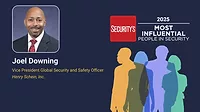Global News
Preventing retail theft and protecting employees

lechatnoir / E+ via Getty Images
Retail theft remains an ongoing concern for security leaders. Not only is there a loss in merchandise, but rising theft can put both employees and customers at risk. Jack L. Hayes International released its retail theft survey that analyzed shoplifting and dishonest employees.
The survey included 26 large retailers and more than 22,000 stores. Of these participants, more than 340,000 dishonest individuals were apprehended, a 45.6% increase compared to 2021. The survey defined dishonest employees as those who committed or witnessed theft. Survey participants cited an increase in organized retail crime (ORC), lower staffing and a shift out of the pandemic as reasons for increased shoplifting apprehensions. Reasons cited for decreases in apprehensions included understaffed police departments, safety-related policies and a focus on merchandise recoveries.
According to the report, 72.7% of retailers saw an increase in shoplifter apprehensions. However, 66.7% of retailers reported an increase in shoplifting recovery dollars without an apprehension. This means that retailers are finding new ways to recover lost revenue without having to apprehend individual shoplifters. This solution solves concerns around understaffing while also ensuring employee safety, as retailers often have policies prohibiting employees from apprehending shoplifters on their own. This is to ensure that employees don’t get injured in an attempt to recover stolen merchandise.
However, employee theft has also been a concern for retailers. In 2022, 73.1% of retailers had an increase in employee theft apprehensions. Eighty-four percent saw an increase in employee theft recovery dollars. Retailers are finding ways to monitor employee theft and recover the lost revenue associated with it. While there was a rise in external shoplifter theft recovery without apprehensions, employee theft recovery involved apprehensions.
The survey also looked into theft mitigation, such as screening new applicants for an organization. Applicants were labeled as “low” or “high” risk depending on past behaviors and attitudes toward employee theft. Questions included asking applicants if they’ve stolen in the past, if they’d help a coworker steal, or if they associated themselves with employees who admitted to stealing from the workplace.
For more information, click here.
Looking for a reprint of this article?
From high-res PDFs to custom plaques, order your copy today!








